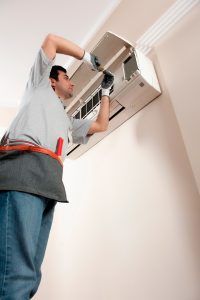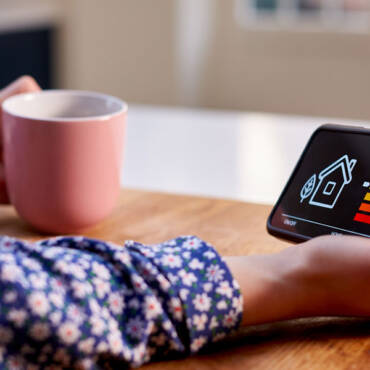As the world focuses more on sustainability, green building certifications like LEED (Leadership in Energy and Environmental Design) have become crucial in promoting environmentally friendly construction practices. Air conditioning plays a significant role in achieving these certifications, as HVAC systems are major contributors to a building’s energy consumption. This article explores air conditioning’s role in attaining green building certifications, highlights innovations in green building materials and designs, and discusses how these innovations complement energy-efficient air conditioning systems.
Air Conditioning’s Role in Achieving Green Building Certifications
Air conditioning systems are essential in maintaining indoor comfort but can also be significant energy consumers. To achieve certifications like LEED, buildings must demonstrate energy efficiency, reduced environmental impact, and improved indoor air quality. Here’s how air conditioning contributes to these goals:
- Energy Efficiency: High-efficiency air conditioning systems are crucial for reducing a building’s overall energy consumption. LEED certification awards points for energy performance improvements, and efficient HVAC systems can make a significant impact.
- Renewable Energy Integration: Incorporating renewable energy sources, such as solar power, to run air conditioning systems can help earn additional LEED points. Solar-powered air conditioning units reduce reliance on grid electricity and lower carbon footprints.
- Indoor Air Quality: Advanced air conditioning systems with improved filtration and ventilation enhance indoor air quality, which is a critical aspect of green building certifications. Properly designed HVAC systems help minimize pollutants and maintain healthy indoor environments.
- Water Efficiency: Some modern air conditioning systems use innovative technologies to reduce water consumption. This is particularly important for earning points in certifications that emphasize water efficiency and conservation.
- Smart Controls and Monitoring: Integrating smart thermostats and energy management systems allows for precise control of air conditioning, optimizing energy use and improving efficiency. These technologies provide data for continuous monitoring and adjustments, ensuring the building maintains optimal performance.
Innovations in Green Building Materials and Designs
The use of green building materials and innovative designs plays a pivotal role in achieving energy efficiency and complementing advanced air conditioning systems. These innovations help reduce the building’s overall energy demand, making the HVAC systems more effective and sustainable.
- High-Performance Insulation: Proper insulation reduces the need for heating and cooling by maintaining a consistent indoor temperature. High-performance insulation materials, such as spray foam and rigid foam boards, provide superior thermal resistance, reducing the workload on air conditioning systems.
- Energy-Efficient Windows: Modern windows with low-emissivity (Low-E) coatings, double or triple glazing, and gas fills between panes significantly reduce heat transfer. These windows help keep indoor temperatures stable, reducing the need for air conditioning.
- Cool Roofs: Cool roofing materials reflect more sunlight and absorb less heat, keeping buildings cooler and reducing the need for air conditioning. These materials can lower roof temperatures by up to 50°F, enhancing overall energy efficiency.
- Green Roofs: Green roofs, covered with vegetation, provide natural insulation and reduce heat absorption. They help lower indoor temperatures and reduce the demand on air conditioning systems, while also providing additional environmental benefits such as improved air quality and stormwater management.
- Sustainable Building Materials: Using materials with low environmental impact, such as recycled content, sustainably harvested wood, and low-VOC (volatile organic compound) finishes, contributes to a building’s overall sustainability. These materials often have better thermal properties and improve indoor air quality.
- Passive Design Strategies: Passive design involves architectural features that take advantage of natural elements to regulate temperature. Examples include strategic building orientation, shading devices, and natural ventilation. These strategies reduce the reliance on mechanical cooling, making air conditioning systems more efficient.
Complementing Energy-Efficient Air Conditioning
Innovations in green building materials and designs are most effective when integrated with energy-efficient air conditioning systems. Here’s how they work together to enhance sustainability:
- Reduced Energy Demand: High-performance insulation, energy-efficient windows, and cool or green roofs reduce the overall energy demand of the building. This allows the air conditioning system to operate more efficiently and consume less energy.
- Enhanced System Performance: When the building envelope is optimized with green materials, the air conditioning system doesn’t have to work as hard to maintain comfortable indoor temperatures. This leads to lower energy consumption and longer system lifespan.
- Improved Indoor Air Quality: Sustainable building materials and passive design strategies improve indoor air quality by reducing pollutants and promoting natural ventilation. This complements air conditioning systems with advanced filtration, ensuring a healthier indoor environment.
- Integrated Design Approach: A holistic approach to building design, considering both passive and active systems, maximizes energy efficiency. For example, incorporating natural ventilation and shading devices reduces cooling loads, enabling the air conditioning system to perform more effectively.
- Economic Benefits: While the initial investment in energy-efficient air conditioning and green building materials might be higher, the long-term savings in energy costs and maintenance are substantial. These savings, combined with potential incentives for achieving green certifications, make it a financially sound choice.
Conclusion and Call to Action
Achieving sustainability and green building certifications like LEED involves a comprehensive approach that includes efficient air conditioning systems, innovative building materials, and thoughtful design strategies. By reducing energy consumption, improving indoor air quality, and integrating renewable energy sources, modern HVAC systems play a vital role in green building efforts.
For homeowners and developers aiming to achieve green building certifications and enhance the sustainability of their projects, it’s essential to work with knowledgeable professionals. Dacs Air Conditioning Perth offers expertise in energy-efficient air conditioning systems and can help you navigate the complexities of green building certifications. Contact Dacs Air Conditioning Perth today to learn how you can integrate advanced HVAC solutions into your sustainable building project and achieve your environmental goals.
Whether you require installation, repair, or maintenance, our technicians will assist you with top-quality service at any time of the day or night. Take comfort in knowing your indoor air quality is the best it can be with MOE heating & cooling services Ontario's solution for heating, air conditioning, and ventilation that’s cooler than the rest.
Contact us to schedule a visit. Our qualified team of technicians, are always ready to help you and guide you for heating and cooling issues. Weather you want to replace an old furnace or install a brand new air conditioner, we are here to help you. Our main office is at Kitchener but we can service most of Ontario's cities
Source link




Add Comment